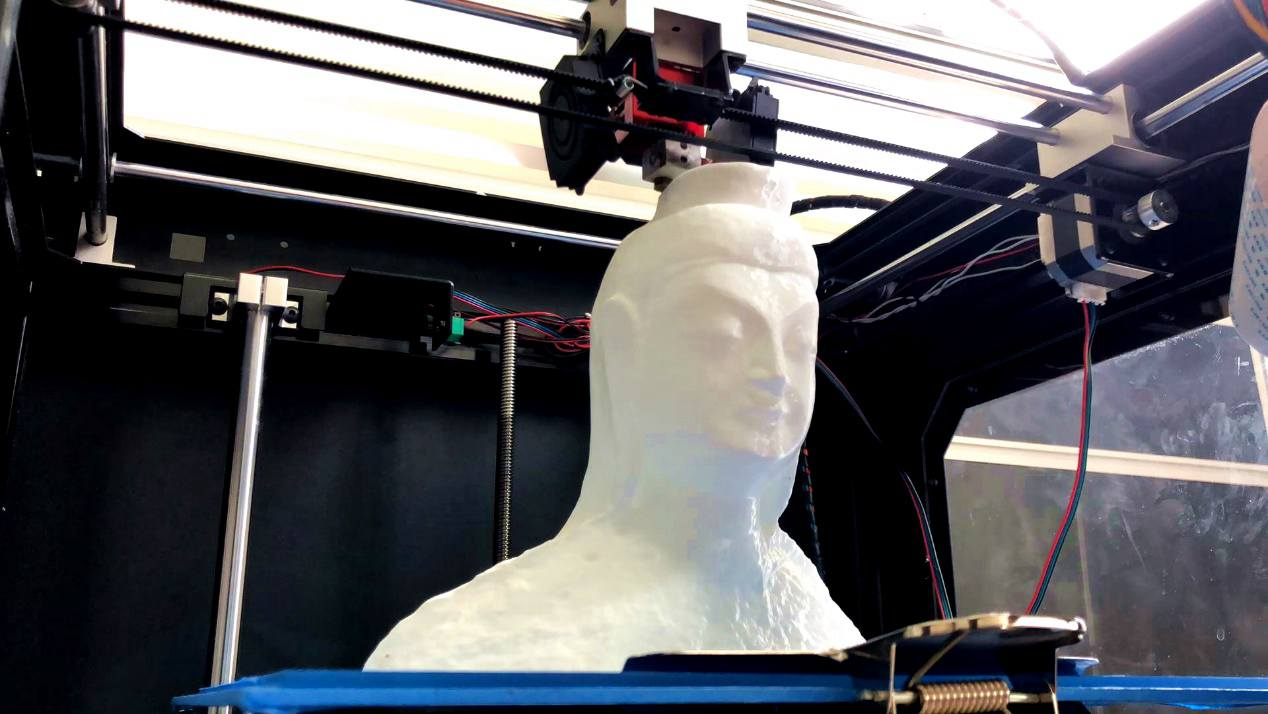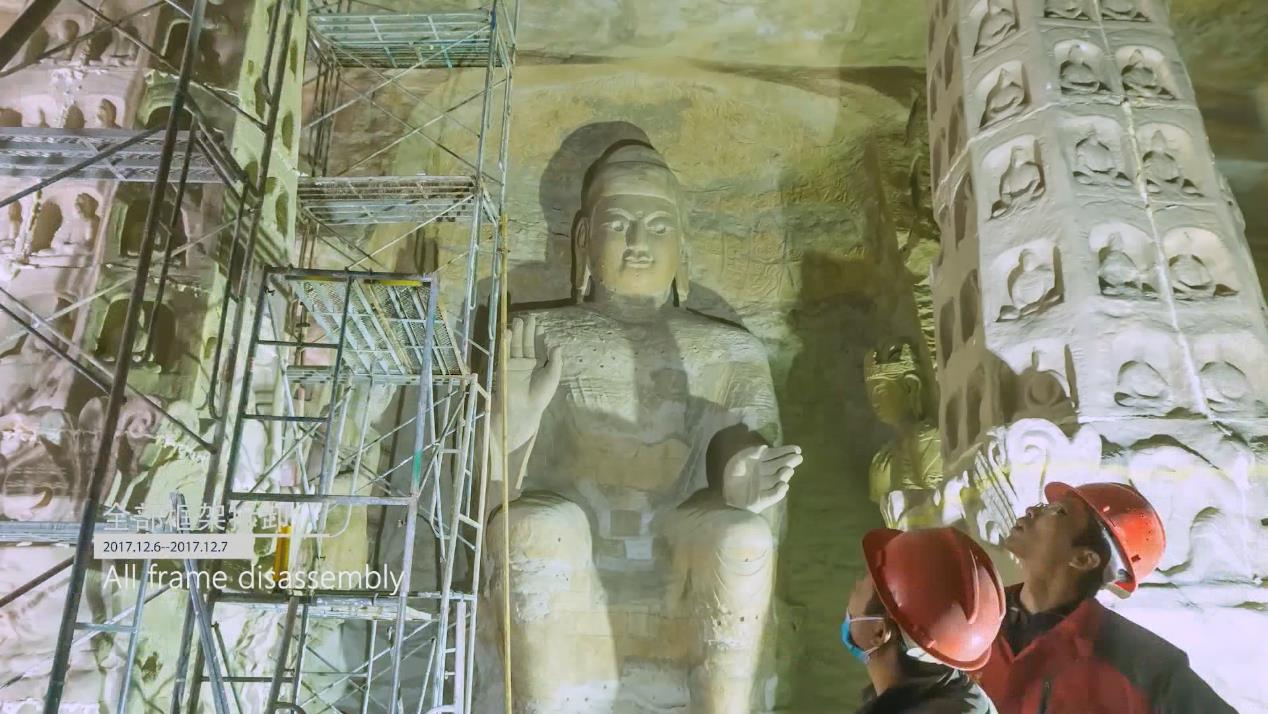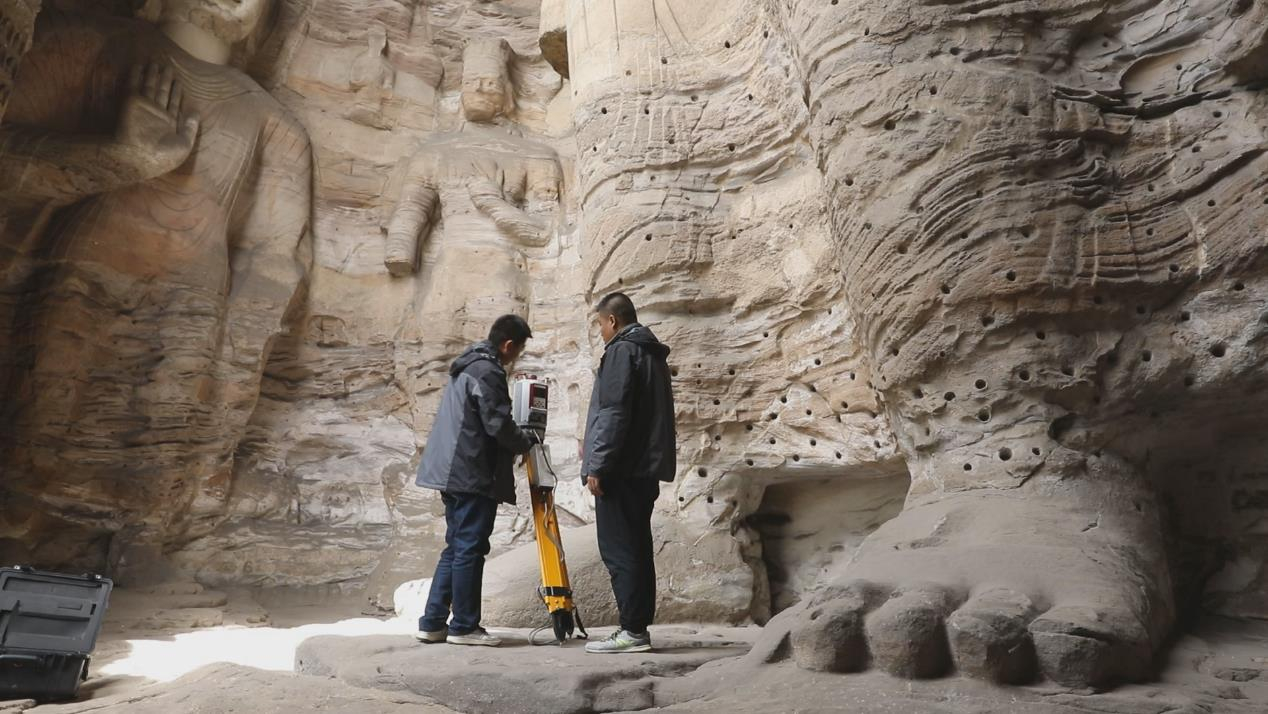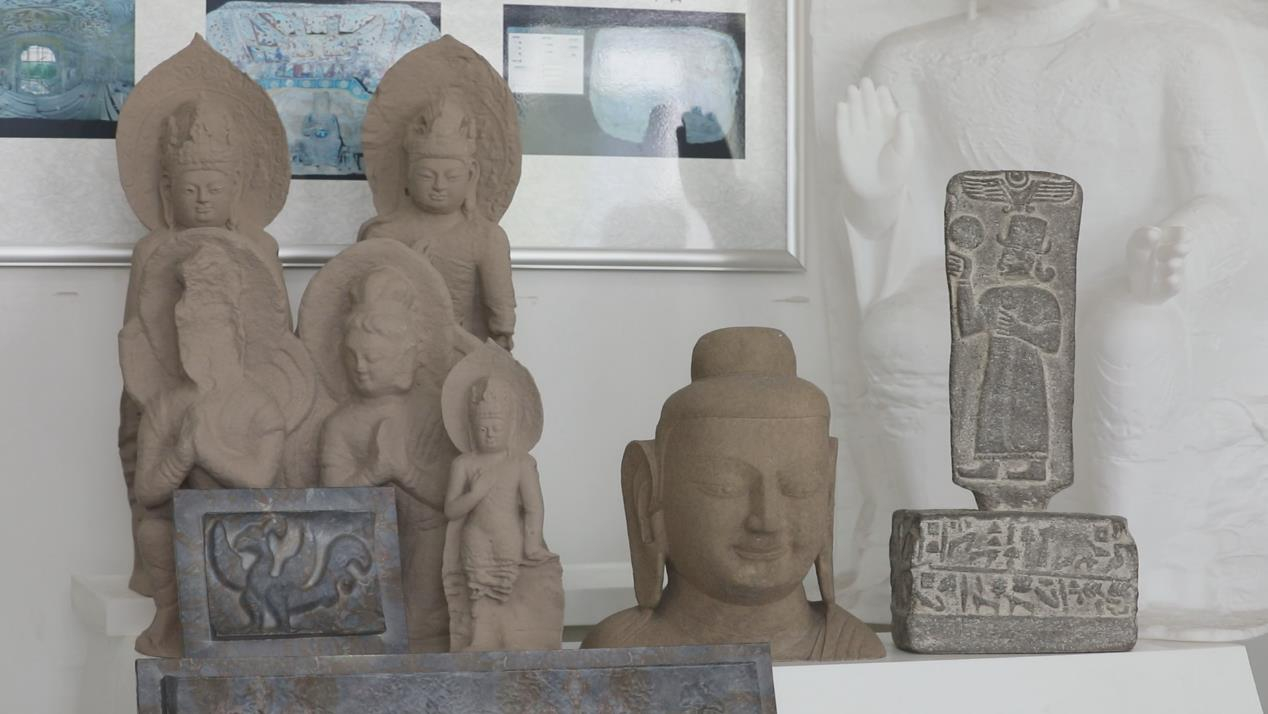
Technology
16:21, 17-May-2019
Digital technologies: Not just replicating cultural relics
Updated
19:28, 17-May-2019
By Hu Chao, Liu Yu
02:53

You no longer need to travel all the way to where your favorite cultural relics were discovered to fully appreciate them. Instead, with the help of 3D printing technology, 1:1 replicas are popping up everywhere. More importantly, digital technology is able to immortalize cultural relics, so say the experts.
Located in the city of Datong in north China's Shanxi Province, the Yungang Grottoes feature nearly 300 caves of different sizes. The Yungang Grottoes Research Institute has so far replicated three caves. Two are being exhibited in the capital city of Beijing and the coastal city of Qingdao in east China's Shandong Province. The other is still in the making in Shenzhen.

The 1:1 replica of a 10-meter-high Buddha statue from the third cave of the Yungang Grottoes now stands in the Media Square in the city of Qingdao. /CGTN Photo
The 1:1 replica of a 10-meter-high Buddha statue from the third cave of the Yungang Grottoes now stands in the Media Square in the city of Qingdao. /CGTN Photo
1,500 years of harsh weather and elements have done a number on the Buddha sculptures. But in recent years, digital technology has them better protected.
Collecting data from the caves is the most basic and important job. The Institute has been doing that since 2005.
"This is a 3D laser scanner. It collects data from every spot of the cave. In the computer system, the spots form lines and lines form planes and a 3D model is eventually created," explained researcher Wang Jiaxin.

Researchers are using a 3D laser scanner to collect data from a cave. /CGTN
Photo
Researchers are using a 3D laser scanner to collect data from a cave. /CGTN Photo
But collecting data of these Buddha sculptures is no quick job. It often takes three months on average to collect data from one major cave. Data processing takes even more time, sometimes a whole year for a major cave. By now they've finished data collecting in just one third of the caves.
Ning Bo is the director of the digital office of the Institute. He's been working in the field for over a decade.

This is how data eventually forms a 3D model in computer system. /CGTN Photo
This is how data eventually forms a 3D model in computer system. /CGTN Photo
"First, we make digital files of the relics. Data can precisely show weathering levels, thus providing references for better measures to prevent it. Data also helps to make virtual restoration to find out the best way to restore an item. And digital archaeological mapping now is also available," Ning explained the functions of the data.
So far the digital technology has offered a hand in eight restorations to the Yungang Grottoes since 2012.

The VR views in a cave. /CGTN Photo
The VR views in a cave. /CGTN Photo
A VR experience is also created through data. It enables people to rise from the ground to the top of the Buddha figures. Thus one can see multiple angles in the cave.
3D printing technology also makes small replicas. Lovely as they look, they are now only for research, not for sale.

Replicas after special coloring look like real relics. /CGTN Photo
Replicas after special coloring look like real relics. /CGTN Photo
Zhang Zhuo is head of the Institute, where he's worked for 17 years. As digital technology thrives, he emphasizes the role of traditional restoration methods.
"No matter in the past, present or future, manual techniques of relic restoration are always important and should be passed down by generations. On this basis, we should learn and master new technology to perfect our work," he said.
(Cover: A small 3D printer makes a replica of a Buddha statue in the Yungang Grottoes Research Institute. /CGTN Photo)

SITEMAP
Copyright © 2018 CGTN. Beijing ICP prepared NO.16065310-3
Copyright © 2018 CGTN. Beijing ICP prepared NO.16065310-3